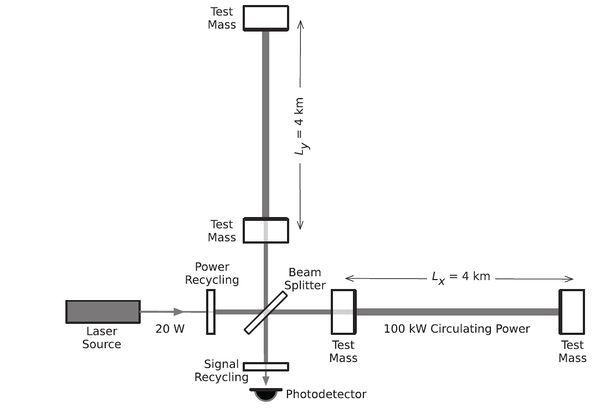Difference between revisions of "LIGO Curvature Compensation"
Tom Bishop (talk | contribs) |
Tom Bishop (talk | contribs) |
||
| (2 intermediate revisions by 2 users not shown) | |||
| Line 13: | Line 13: | ||
The above says that the ends of each arms are situated several feet off the ground than the center station to "compensate for the Earth's curvature." Would it work if the earth was flat? | The above says that the ends of each arms are situated several feet off the ground than the center station to "compensate for the Earth's curvature." Would it work if the earth was flat? | ||
| − | Yes, just as would be possible to see an object which is elevated several feet above your eye level 4 km in the distance, it is also possible to point a laser slightly | + | Yes, just as would be possible to see an object which is elevated several feet above your eye level 4 km in the distance, it is also possible to point a laser slightly upwards to hit it. |
LIGO diagram: | LIGO diagram: | ||
Latest revision as of 05:50, 17 January 2023
One argument in favor of curvature is that that when building the Laser Interferometer Gravitational-Wave Observatory (LIGO) its builders had to compensate for the curvature of the earth. On the LIGO website we read:
https://www.ligo.caltech.edu/page/facts (Archive)
“ LIGO’s arms are long enough that the curvature of the Earth was a factor in their construction. Over the 4 km length of each arm, the Earth curves away by nearly a meter! Precision concrete pouring of the path upon which the beam-tube is installed was required to counteract this curvature. ”
Looking further at the matter, at the bottom of p.168 of Einstein’s Unfinished Symphony (Archive) we read additional details of LIGO's curvature compensation method. We see:
“ The ends of each arm are actually situated several feet higher off the ground than their starting point at the center station. That’s to compensate for the Earth’s curvature. ”
A Flat Earth Interpretation
The above says that the ends of each arms are situated several feet off the ground than the center station to "compensate for the Earth's curvature." Would it work if the earth was flat?
Yes, just as would be possible to see an object which is elevated several feet above your eye level 4 km in the distance, it is also possible to point a laser slightly upwards to hit it.
LIGO diagram:
The people at LIGO had to take steps to aim and align the components at some point. To hit the opposite marker they would have aimed the laser beam at the destination, or would have aligned the intermediate components so that the laser beam would hit the destination. The set up does not appear to be a physical obstacle on a FE.

